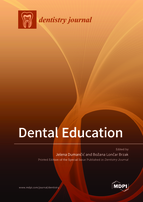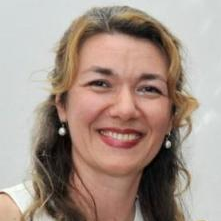Dental Education
A special issue of Dentistry Journal (ISSN 2304-6767). This special issue belongs to the section "Dental Education".
Deadline for manuscript submissions: closed (1 September 2021) | Viewed by 68597
Special Issue Editors
2. Department of Dental Medicine, University Hospital Centre Zagreb, Zagreb, Croatia
Interests: dental anthropology; oral health; forensic dentistry; history of dentistry; special care dentistry
Special Issues, Collections and Topics in MDPI journals
Interests: oral medicine; burning mouth syndrome; potentially malignant oral lesions; oral cancer
Special Issues, Collections and Topics in MDPI journals
Special Issue Information
Dear Colleagues,
The dental curriculum is like a living organism—it is developed through time, manifesting regional cultural and scientific heritage and reflecting modern trends. Undergraduate dental curriculum is periodically rebuilt in harmonization of the higher education system between countries, especially in Europe. Structure, content, learning, and assessment in undergraduate and postgraduate dental education and dental auxiliary personnel training are shaped based on the professional consensus. Constant updates on recent technological innovations and evidence-based best practice are necessary.
In modern times, ethical issues are raised more than ever. Can we teach our students how to be dedicated health professionals and manage a successful practice at the same time? Does commercialization of our profession also affect dental curriculum today?
The coronavirus pandemic has imposed new challenges, moving us from lecture rooms and clinics to an online environment.
This Special Issue is dedicated to dental education in all its segments. We invite contributors to publish new information on curriculum updates and quality assurance in undergraduate/postgraduate education including clinical protocols, teaching, and competence assessment methods before and during the Coronavirus pandemic, ethical issues, and student surveys. Original research, reviews, and short communications are welcome for submission.
Prof. Dr. Jelena Dumancic
Prof. Dr. Božana Lončar Brzak
Guest Editors
Manuscript Submission Information
Manuscripts should be submitted online at www.mdpi.com by registering and logging in to this website. Once you are registered, click here to go to the submission form. Manuscripts can be submitted until the deadline. All submissions that pass pre-check are peer-reviewed. Accepted papers will be published continuously in the journal (as soon as accepted) and will be listed together on the special issue website. Research articles, review articles as well as short communications are invited. For planned papers, a title and short abstract (about 100 words) can be sent to the Editorial Office for announcement on this website.
Submitted manuscripts should not have been published previously, nor be under consideration for publication elsewhere (except conference proceedings papers). All manuscripts are thoroughly refereed through a single-blind peer-review process. A guide for authors and other relevant information for submission of manuscripts is available on the Instructions for Authors page. Dentistry Journal is an international peer-reviewed open access monthly journal published by MDPI.
Please visit the Instructions for Authors page before submitting a manuscript. The Article Processing Charge (APC) for publication in this open access journal is 2000 CHF (Swiss Francs). Submitted papers should be well formatted and use good English. Authors may use MDPI's English editing service prior to publication or during author revisions.
Keywords
- Undergraduate dental education
- Postgraduate dental education
- Continuing education
- Specialty training
- Competencies and learning outcomes
- Clinical skills teaching
- Clinical protocols
- Teaching methodology
- Competence assessment
- Quality assurance
- Professionalism in dentistry
- Ethics in dental education
- Online education
- Virtual reality
- Student survey








